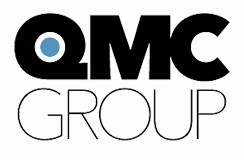Have you ever heard the term “micro-yes”? One small “yes” in a series of yeses moves the prospect through the sales funnel one step at a time. The key is that, at each stage, the prospect agrees to a small request. Will you open this envelope? Will you take this quiz? One tiny step leads them to a much larger “yes” later. It’s a very effective technique, especially for more significant, more complex sales.
What might this look like in action? Take the salesman at a car dealership, for example. He doesn’t knock on the door of a couple’s house and says, “Here’s the contract for your new car.” Instead, the process might look like this:
Micro-yes #1: A personalized mailer arrives at the couple’s home. The teaser says, “Look inside to see the trade-in value of your car! (Hint: It’s higher than you think.).” This leads the prospect to open the envelope—the first micro-yes.
Micro-yes #2: The prospect is invited to log into the website to see what their trade-in value will do for them. It can’t hurt to look, right? You never know what you might find. The couple goes to the website. This is the second micro-yes.
Micro-yes #3: The couple finds a car they like. They drill deeper and look at the pricing, features, and specs. Once they hit the pricing page, they are invited to receive a personalized brochure of the car, complete with their selected features. It’s free—no commitment! Now the couple is starting to dream a little. Sure, why not? It’s just a printed piece. That’s micro-yes #3.
Micro-yes #4: The brochure arrives, showing them the price of the car after their trade-in. Plus, they are now invited to come into the dealership to test drive “their” car. The couple agrees to at least give it a try. (“We are going to be over that way today anyway.”) Micro-yes #4.
Micro-yes #5: The couple arrives at the dealership. Once they put the key in the ignition, the deal is closed. Two weeks earlier, the couple hadn’t even thought about trading in their car is driving out of the dealership with a brand new set of wheels.
That’s the power of the micro-yes. It sells cosmetics, dental supplies, and pancakes as much as it does with automobiles. How could you break down your sales process into a series of micro-yeses and increase your chances of closing a sale?

